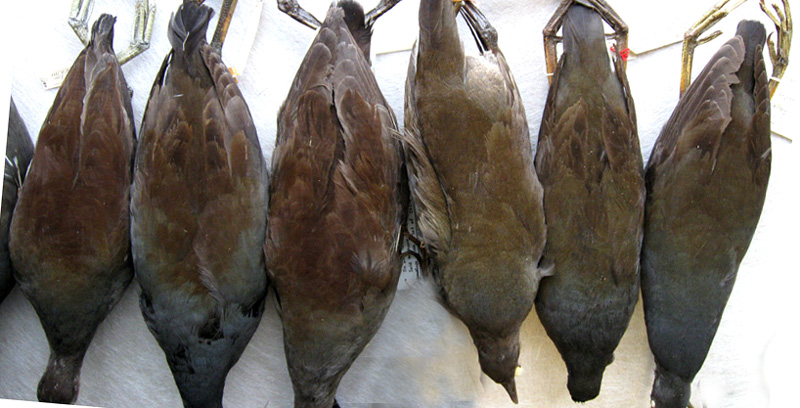Last winter’s Common Moorhen in Newfoundland, given the likely split of New World and Old World moorhens into separate species, led me to try to determine the origin of the Newfoundland bird. That study of photos turned up a few small differences in bill color and shape, but nothing fully reliable.
Now I have finally had a chance to look at specimens of the two species at Harvard’s Museum of Comparative Zoology, and a difference in back color seems to provide the clue to confidently identify the Newfoundland bird as an American Common Moorhen.

American birds of all ages have a rich reddish-brown back, which is especially obvious across the upper back (between the shoulders) and contrasts fairly strongly there with the gray neck and breast. On Eurasian moorhens, the back is a drabber olive-brown color, showing the brightest reddish-brown tones (but still drabber than the color on American) on the tertials and lower back. Photos of the Newfoundland bird clearly show the rich reddish upper back of an American Common Moorhen.
This color difference appears to be consistent in each species across all ages and all regions, and should provide a reliable means of identification. The difference is, however, fairly subtle and somewhat subjective, so lighting and photographic artifacts could easily confuse the issue. For example, the Common Moorhen from Shemya Island in the Aleutians in fall 2010 (now apparently confirmed by DNA as a Eurasian) probably cannot be identified from the single photo. That bird is now a specimen in the University of Alaska museum, so a comparison with other specimens is possible.
This is based on a simple visual survey of a few dozen specimens, so obviously it needs further study and field testing, but observers of any unidentified moorhen should add back color to the short list of potentially distinguishing features.

